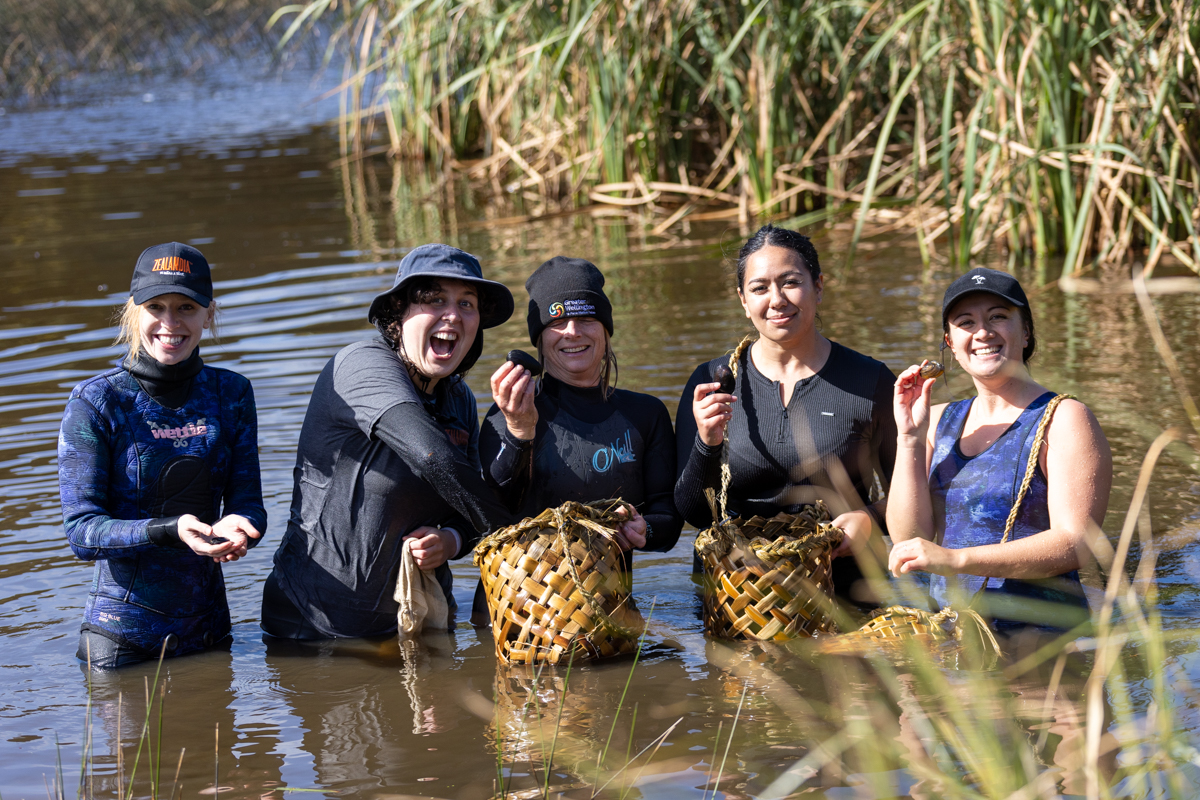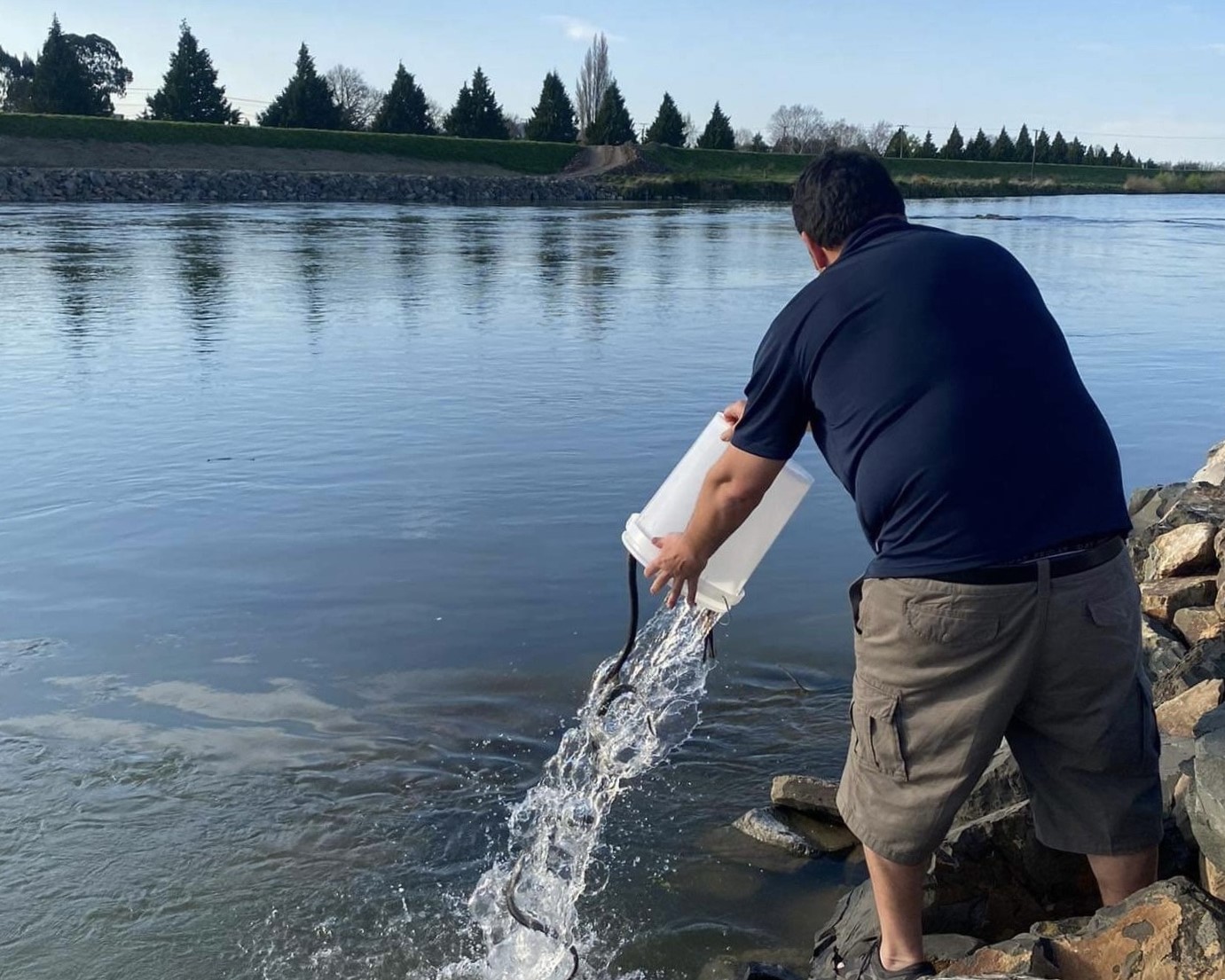New research urges major policy reset for moving native freshwater species in Aotearoa
01 July 2025
Cawthron Institute, Whakatū/Nelson — A landmark study just published in the New Zealand Journal of Ecology calls for a wholesale rethink of how Aotearoa New Zealand authorises, manages, and monitors how people move native freshwater fish and invertebrates.
The paper, ‘Rethinking freshwater translocation policy and practice in Aotearoa New Zealand,’ reviews more than three decades of translocation projects and concludes that current systems are ‘fragmentary, technically under-resourced, and often fall short of Te Tiriti o Waitangi commitments.’
“Translocations can support mahinga kai, rescue threatened species, and reconnect communities with their awa,” said lead author Dr Aisling Rayne of Cawthron Institute, “but without clear, cohesive policy and genuine mana whenua leadership, these efforts risk being ad-hoc and, at worst, harmful.”
Three priority fixes
The authors identify three shifts that would unlock the full ecological and cultural potential of freshwater translocations:
- Joined-up authorisation and governance – streamline permits and align the patchwork of legislation that currently spans conservation, fisheries, and regional planning.
- Inclusive decision-making – front-load translocation planning with mana whenua, local communities, and sector stakeholders so that who decides and how decisions are made are transparent and Treaty-honouring.
- Consistent monitoring and reporting – adopt nationwide standards for tracking ecological outcomes and cultural aspirations, so successes and lessons are shared rather than lost.
Lessons from the field
The paper features two case studies illustrate both promise and pain points:
- Zealandia Te Māra a Tāne (Wellington): reintroductions of toitoi (common bully) and kākahi (freshwater mussel) showed how collaborative, Treaty-based projects can revitalise taonga species—but also how the technical know-how is often yet to be discovered.
- Hokonui Rūnanga (Murihiku / Southland): captive breeding and translocation of kanakana (pouched lamprey) demonstrates iwi-led leadership, yet highlights the maze of permits and biosecurity hurdles faced by community groups.
“These projects prove that culturally grounded science builds trust and public care,” said co-author Dr Joanne Clapcott (Cawthron Institute). “What’s missing is a national direction that makes this the norm, not the exception.”
Looking ahead: climate change, biosecurity and new tech
The paper argues that translocations will only grow in importance as climate pressures shift species’ ranges and new tools—such as gamete cryobanking and broodstock surrogacy—become viable. It also warns that poorly planned ‘mitigation’ transfers can spread pests or distract from habitat protection.
“Freshwater translocations aren’t a silver bullet,” said Dr Rayne, “but with supportive policy and careful planning they can be a powerful part of a wider restoration toolkit.”
Research partners
Riki Parata, Hokonui Rūnanga
“Hokonui Rūnanga welcomes the research findings, hoping they will guide iwi and their partners in the translocation of taonga species.
The current framework restricts our ability to translocate our taonga, despite our tīpuna (ancestors) having done so for generations before us. This paper highlights numerous barriers and offers solutions.
We are grateful for the research and support of Dr Aisling Rayne, Dr Joanne Clapcott, the Cawthron Institute, and the multiple contributors involved in bringing these findings to light. Our hope is to see new policies and processes established on the back of this research, integrating Mātauranga Māori and multiple scientific disciplines to enhance decision-making around translocations.”
Dr Matthew Wylie, Plant and Food Research
“This work highlights opportunities to explore how emerging biotechnologies—such as gamete cryobanking and broodstock surrogacy—could be integrated with translocations in ways that uphold Indigenous rights and worldviews.
These innovative spaces allow us to co-develop new tools and new knowledge to protect threatened freshwater taonga species in ways that honour Te Ao Māori.”
Dr Danielle Shanahan, Zealandia
“Zealandia Te Māra a Tāne has witnessed first-hand how the revitalisation of mātauranga through translocations can shape people and relationships, as much as the environment. We need improvements in our back-end systems to better help achieve these outcomes.”
Read >
Rayne A, Beaven K, Clapcott J E, et al. (2025) Rethinking freshwater translocation policy and practice in Aotearoa New Zealand. New Zealand Journal of Ecology 49(1): 3602. DOI: 10.20417/nzjecol.49.3602
This study was completed in partnership by researchers and contributors from:
Cawthron Institute, Te Kura Pūtaiao Koiora School of Biological Sciences at Te Whare Wānanga o Waitaha University of Canterbury, Zealandia Te Māra a Tāne, Kitson Consulting Limited, Hokonui Rūnanga, Te Kura Mātauranga Koiora School of Biological Sciences at Te Herenga Waka Victoria University of Wellington, New Zealand’s Biological Heritage Science Challenge, and The New Zealand Institute for Plant and Food Research Limited.
The open-access article includes a practical “next steps” table for policymakers and practitioners.

Image Credit: Manaaki Barrett, Zealandia. Zealandia Te Māra a Tāne kākahi translocation in 2022. The kete (baskets) were bespoke made in the raukawa style by Te Rōpū Raranga o Manaia (Hikoikoi Weavers).

Image Credit: Hokonui Rūnanga Kaupapa Taiao team. Riki Parata releasing kanakana upstream of Te Au-Nui-Pihapiha Kanakana (the Mataura Falls) during a trap and transfer effort.

Aisling Rayne
Social Scientist